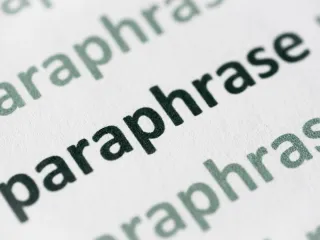Anytime you’re put into a position to write, most people will instruct you to write with an active voice. Rarely do teachers or writers elaborate further, but they give reasons such as professionalism and clarity.
Regardless, while many say it’s not good to write in a passive voice, it doesn’t mean a passive voice doesn’t have its place. There are times when using a passive voice makes sense and other times when it’s best to keep using an active voice.
Active voice is better in academic and professional settings because it improves readability and strengthens the piece. Most passive sentences sound off in an academic and professional environment. Even so, it’s important to understand both voice versions.
A passive voice is better for storytelling and, surprisingly enough, scientific writing. When sentences don’t need the use of pronouns and want to emphasize the action more than the actor, you can use a passive voice. Still, an active voice will sound better in most cases.
While the passive voice has its place, it’s still crucial to identify and fix it so that your writing improves and you can write more confidently. Here’s everything you’ll need to know about passive and active voice.
What is the Passive Voice?
The easiest way to think of passive voice is how the verb within the sentence interacts with the subject. With passive voice, the verb typically acts upon the subject. When using an active voice, the subject is actively doing the action.
For example, “the dinner was paid for” is a sentence in passive voice. The subject in this sentence is “dinner,” and something is acting upon it. If you want to make this sentence sound active, you will write it like this, “the man is paying for the dinner.” Now the man is acting upon the dinner.
It’s important to note that passive voice isn’t bad grammar, no matter who tells you it is. There are prime opportunities when a passive voice is appropriate for sentences. Additionally, in some forms of academia, you will benefit from writing in the passive voice.
The scientific community prefers to write their research and reports in a passive voice. They favor a passive voice because it helps separate the researcher from the research. An objective and unbiased viewpoint are vital in scientific research.
Remember that any instance of “to be” creates a passive voice sentence. There are some exceptions, but in most cases, this is definitive. Now that you have a baseline of passive voice, it’s time to see how it fares against its counterpart.
Active Voice vs. Passive Voice
Now that you know what passive voice is, you must understand how to use both properly. There are a few key differences between the two, but essentially active and passive voices differ in how they interact with the subject of the sentence.
With a passive voice, something or someone acts upon the subject. For example, with an active voice, you’ll find that the subject of the sentence acts upon the forces within the sentence. Certain writing benefits from a passive style, but most benefit from an active one.
Here’s a perfect example of how a passive voice may sound stronger than an active voice. If you want to write the sentence, “People make rules so they can break them.” The sentence has power and presence, but you can use fewer words to convey the same message.
To change this sentence, you can instead say, “Rules are made to be broken.” The passive voice for this sentence sounds better for a few reasons. First, the agent of the phrase isn’t too important. Since that’s the case, you can condense the saying to convey a powerful sentence with a passive voice.
In this sentence, using passive voice isn’t poor grammar, and it’s better than the original. There is a time and place to use passive voice, but it’s beneficial to identify those moments. Here’s what you should know about passive voice and how to avoid it.
When to Avoid Passive Voice and Why
While passive voice has a place, most teachers and professional writers urge you to avoid it when possible. Using an active voice has more benefits than a passive one, so it’s best to understand and use it as often as possible.
Using an active voice provides clarity, urgency, and focus. When using a passive voice, you’re doing the exact opposite. With a passive voice, you’ll find yourself creating wordy and aimless sentences. Additionally, there is less depth to the sentence you’re making.
When writing, you want everyone to understand what you’re writing and why you’re writing it. An active voice helps to provide that clarity and understanding. Sentences in the passive voice become lengthy and difficult for some readers to understand and read.
Anytime you want your subject to be the focus and do the action, you want to ensure you’re using an active voice. Sometimes in writing, it’s okay to use a passive voice when you want to emphasize the effects something has on a subject.
For example, if you’re trying to write objectively, such as in scientific and academic writing, you want to ensure you’re using a passive voice. In scientific writing, you separate yourself from the research as best you can so that the readers can see an unbiased, objective report.
You always want to write in an active voice when arguing or presenting something. It’s imperative to convince your reader about whatever subject you’re discussing. If you speak passively, you’ll find it harder to connect with the reader, and you may lose them.
Tips for Writing in Active Voice
Clarity, confidence, and urgency are all qualities of a well-written active sentence. If you want to write in an active voice, you must identify opportunities to fix passive voice sentences. The best way to do that is by understanding both passive and active voice.
Consider the subject position, past participle, the sentence’s action, and flow when writing in an active voice. You want to keep these things in mind before getting into the details of writing in an active voice.
Before getting into tips about writing in an active voice, remember that your teachers and supervisors also expect proper research and citations. Practice your writing fundamentals by learning how to cite your works properly.
Fortunately, there’s also a good alternative. You can use a citation generator such as the free one Quetext provides. Quetext’s citation generator lets you cite your sources in MLA, APA, and Chicago Style. Anyways, here are your tips for writing in an active voice.
Look for “to be” Next to a Past Participle
Sentences that use “to be” before a past participle are extremely easy to identify. The easiest way to fix a passive voice is to identify sentences that use “to be” because most of the time, “to be” means that the sentence is passive.
For example, “Where we go next is to be decided by the tour guide.” In this sentence, you can see the word “to be” before the past participle “decided.” This combination alone indicates that the sentence is in a passive voice.
To fix the sentence, you can write, “The tour guide will decide where we go next.” See the difference? This sentence flows better and doesn’t use “to be” or “decided.” In this sentence, the subject is the tour guide, and they are making decisions.
You can easily reconstruct “to be” sentences to be more active. When writing, watch for the common “to be” trap, as these sentences are easy to create by accident. Additionally, when you spot “to be” next to a past participle, ensure that you use an active verb to fix the sentence.
See If You Include a “by” Phrase
There are plenty of times in writing when you use the word “by,” which sounds natural. Using “by” in your sentences doesn’t automatically make your sentence passive, but using “by” does make it easier to construct passive sentences.
For example, “The dog was scared off by the noise.” It’s written in a passive voice, but it’s difficult to catch because of the “by” put into it. If you watch out for these “by” sentences, you’ll begin to catch plenty of instances of passive voice, even if the sentence flows well.
Still, you can make it sound better without needing “by.” For example, you can say, “The noise scared off the dog.” You essentially eliminate extra words, and the sentence has the same meaning. With an active voice, you’re aiming for coherence and concise sentences.
You can also say, “The noise scares the dog off.” There’s plenty you can do with a phrase to make it active. The more you practice, the better you get. Remember, if you see a “by” phrase, think about the sentence construction and rearrange things.
Consider If Your Object or Actor is Emphasized
The point of active voice is to provide clarity and emphasize the actor of the sentence. Essentially the actor is always the center of the sentence and is typically the doer of the actions. When the actor or subject isn’t evident, you’ll have sentences that don’t provide information.
For example, “The bat was broken.” The only information given is that there’s a broken bat. You don’t know who broke the bat or why the bat’s broken. Some writers use passive voice to hide information and emphasize the sentence’s action, which sometimes makes for great storytelling.
Although, in an academic environment, you don’t typically want to surprise or hide information. If the sentence were active, you would read, “Brendan broke the bat.” Now the reader understands the actor Brendan is the culprit for the bat’s destruction.
Anytime you construct a sentence in an active voice, you must consider the actor. If you find that the emphasis is more on the action, you’re likely speaking in a passive voice. Rearrange the sentence so that the subject is the doer and is the one taking action.
Check For Clarity From a Reader’s Perspective
The last tip may be obvious, but writers often forget to see their writing from the reader’s perspective. Consider how your sentence sounds in the context of your entire piece and if your whole piece sounds active and coherent.
Consider this simple sentence, “The woman was seen by me.” From a reader’s perspective, it’s a relatively long sentence when you can easily say, “I saw the woman.” You can simplify that further by saying, “I saw her.” Assuming your reader knows who “she” is.
Fixing one sentence won’t always be that easy. Sometimes you’ll have to go back and fix multiple sentences before constructing something that makes sense for you and the reader. That’s why ensuring your sentences play off each other is important.
Ensure that you’re reading sentences back to yourself as often as possible, and ensure each sentence is as clear as possible. Don’t be afraid to scrap entire paragraphs if you must. Move things around and reconstruct sentences when you see clarity issues.
Conclusion
While it has its uses, a passive voice is still not as strong as an active one. In professional and academic writing, it’s extremely important to use an active voice. Clarity, confidence, and focus are absolute musts in these environments.
Now that you understand the importance of both an active and passive voice, you should try to practice your writing skills more. In addition to using these techniques, you can better your writing through various practice methods.
Try writing some passive voice sentences and then fix them. Review your writing and see where there are examples of passive sentences. You’ll enjoy fixing and constructing new sentences, and your readers will enjoy your writing more.
Additionally, don’t forget to check your work for plagiarism. Even if it’s not intentional, you may run into instances where you accidentally plagiarize something during your research or paraphrase information you found.
Keep practicing good writing by using plagiarism checkers such as Quetext. Quetext provides users with an extensive plagiarism checker free of charge. Copy and paste your document into the plagiarism checker, and Quetext will scan the entire thing.









